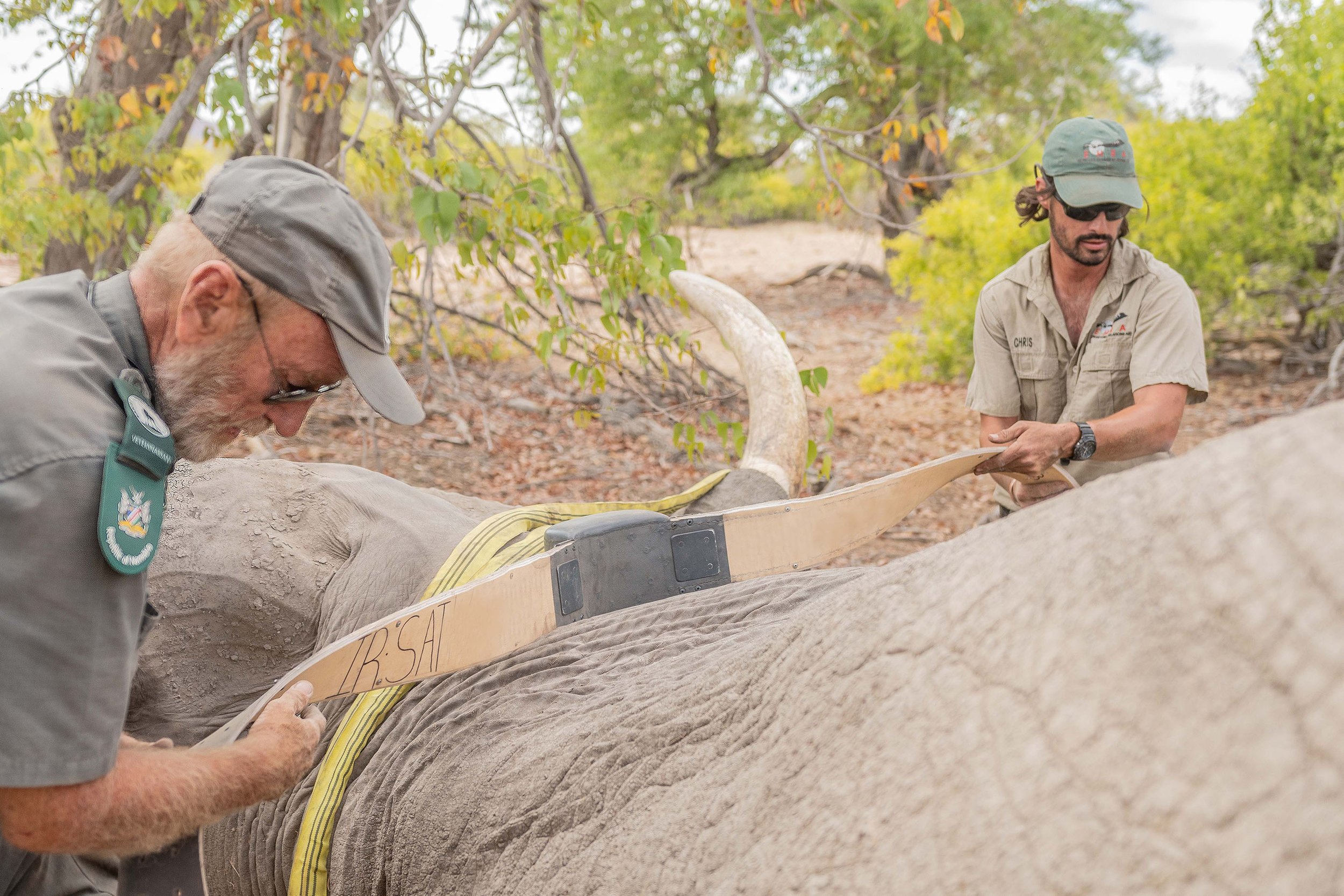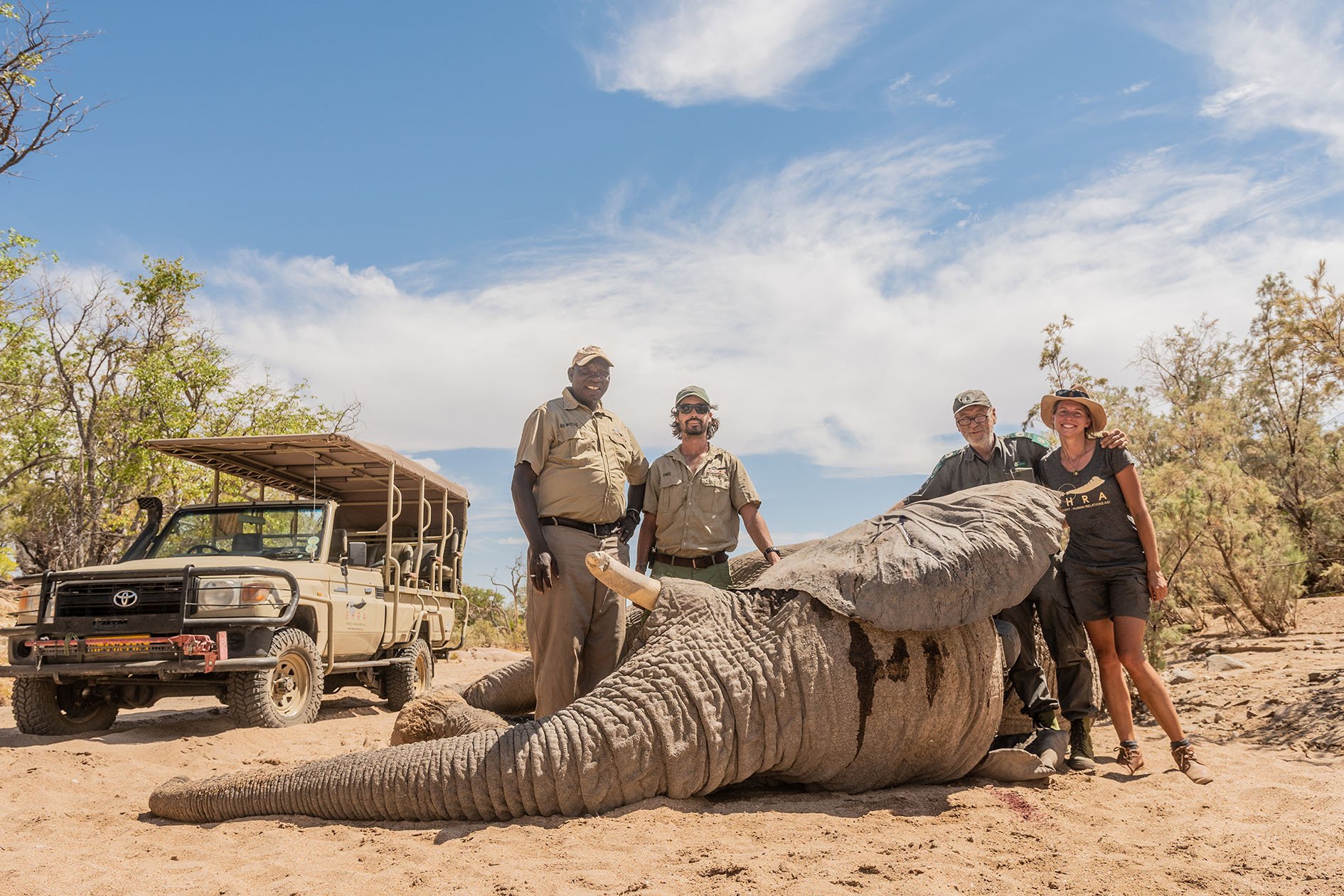EHRA collars Desert Elephants
For the first time ever, EHRA fitted GPS collars on desert-dwelling elephants: Bennie and Porthos!
12.1.2021 - EHRA and MEFT fitted satellite collars on two males of the desert-dwelling Ugab River West population to monitor their movement in real time and receive early warning alert when elephants move into identified danger zones.
A massive thanks goes to the Ministry of Environment, Forestry and Tourism Namibia (MEFT) for providing their amazing veterinarian Dr Axel Hartmann who darted and collared the two males from the car.
Dr Hartmann has over 35 years of experience in wildlife veterinary, so we are incredibly grateful for his expertise.
Dr Hartmann and Chris Pitot are fitting the collar on Bennie.
The collars were funded by Aktionsgemeinschaft Artenschutz (AGA) e.V. to allow us to track the desert population in real time, and to receive alerts of sudden movement and of entry into "danger zones".
We decided to collar the males as one of them usually accompanies the herds and being mindful of the extraordinary stress the females have experienced in recent times, we refrained from collaring them for now.
This is a huge step forward.
A strong collaboration between the Ministry of Environment, Forestry and Tourism (MEFT) and EHRA is of vital importance for the long-term success of all of our programmes.
Ugab elephants have had their home range to the west of the ephemeral river, but in recent years they have migrated east and spent many of the rainy months on commercial farms. Here, three adult females and one male were shot in 2020 which reduced this desert-dwelling subpopulation to 21 elephants. The new GPS collars will track the elephants in real-time and the NGO will receive alerts when the collared animals will move into identified alert zones. Apps such as Earth Ranger allow for geo-fencing techniques that send out early warning signals, allowing EHRA and the MEFT to immediately respond to emergencies or prepare the relevant village or farm of the approaching giants.
The small team of Mattias Kangumbe, Chris Pitot, Dr Axel Hartmann (MEFT) and Christin Winter did a fantastic job of successfully collaring the two males.
Prior to the collaring operation EHRA had sent their expert tracker Mr Kangumbe to find the bulls who were found together and in great distance to the herds. “It’s important to know where the animals are, so the collaring can happen as early in the day as possible. The later in the day, the hotter and more exhausting the whole exercise becomes, for both the animal and the team which can become increasingly risky”, Chris Pitot, EHRA Field Manager explains, who coordinated the operation with Mr Kangumbe.
Bennie was up on his legs quickly after the collaring and is doing well.
A huge thanks to all involved, an especially to Dr Hartmann, and our excellent ground team Mattias and Chris who stayed on top of the elephants and directed the vet!
Both bulls have been seen since and they are doing well!
© Photos and text by Christin Winter




